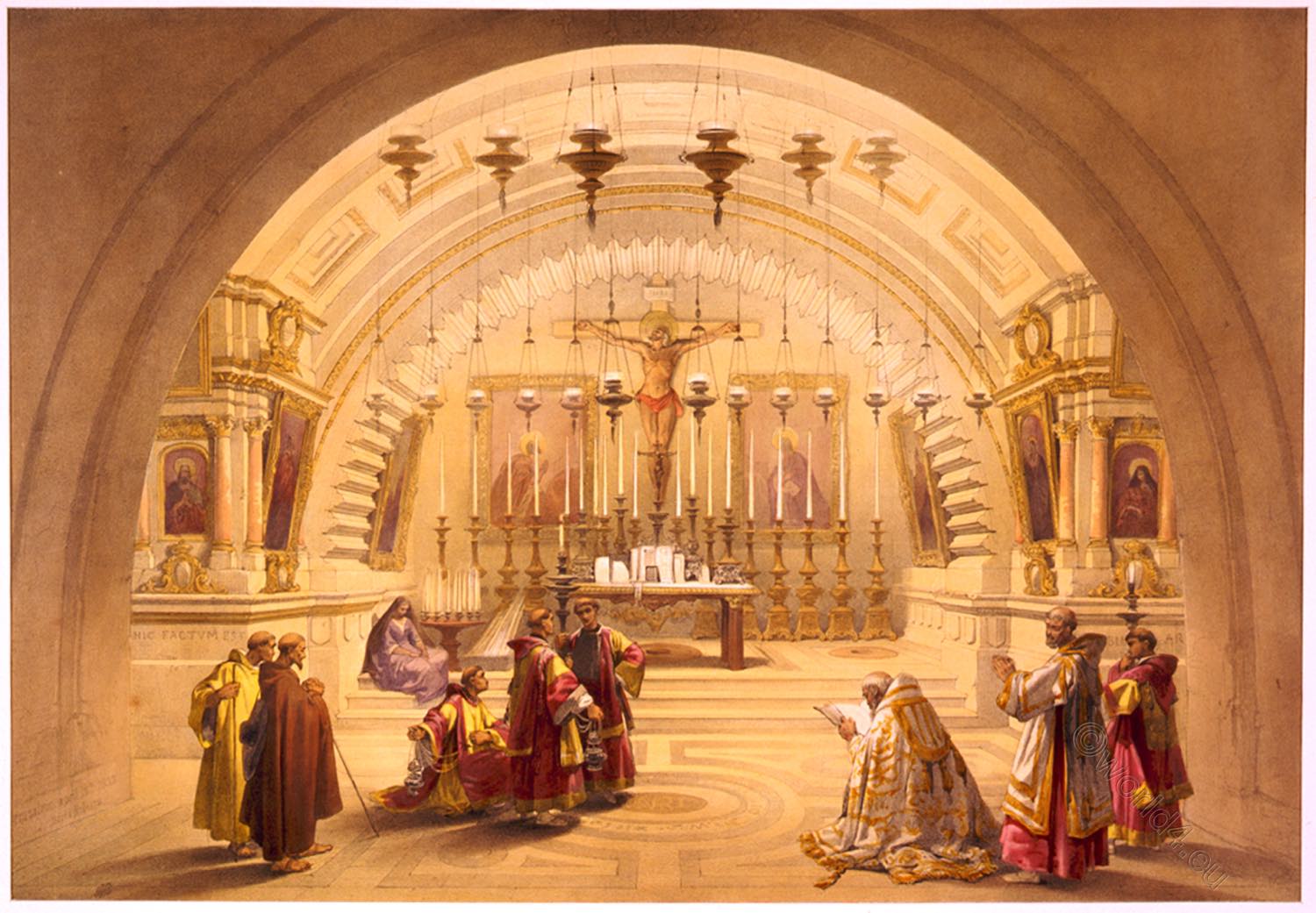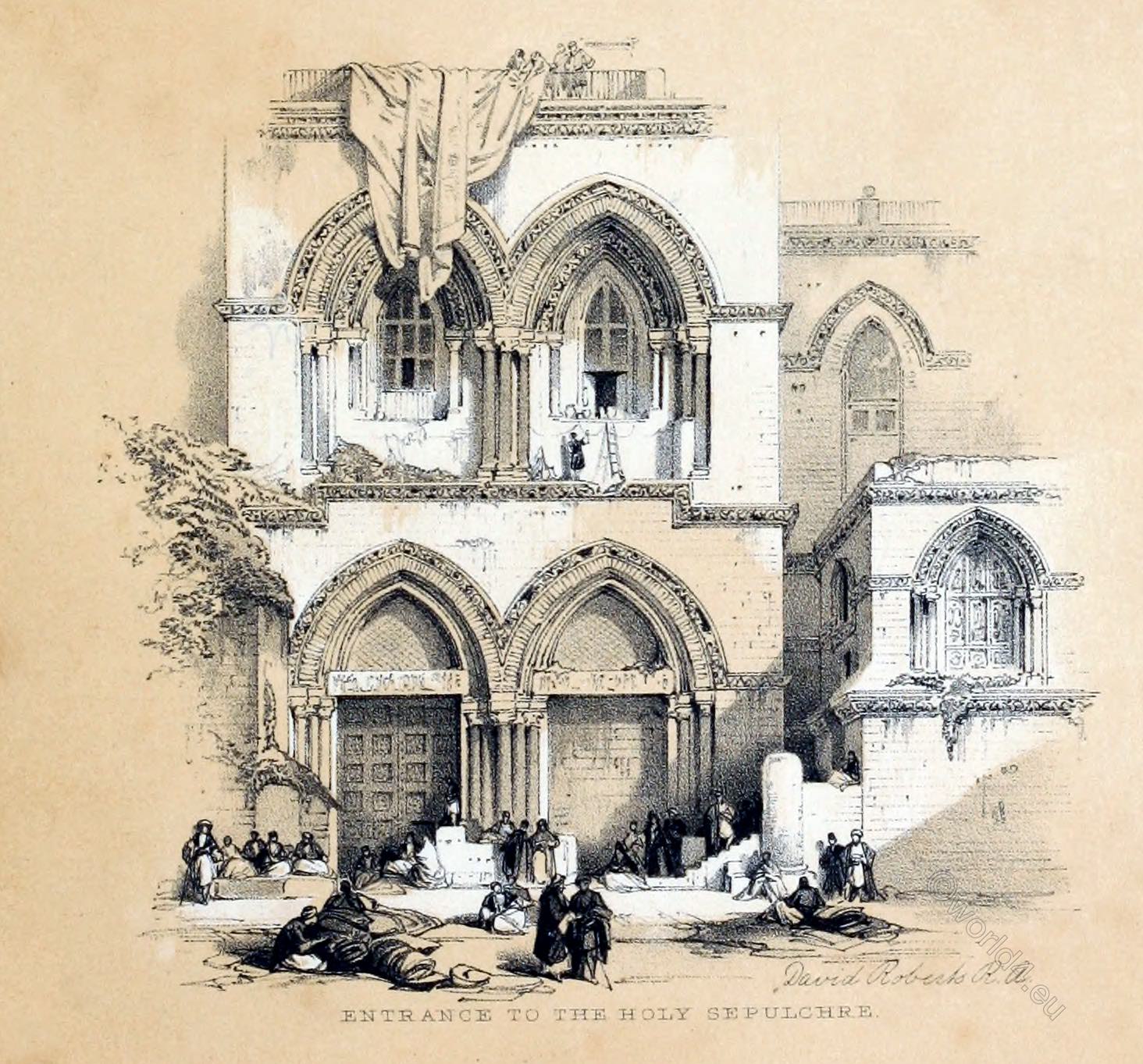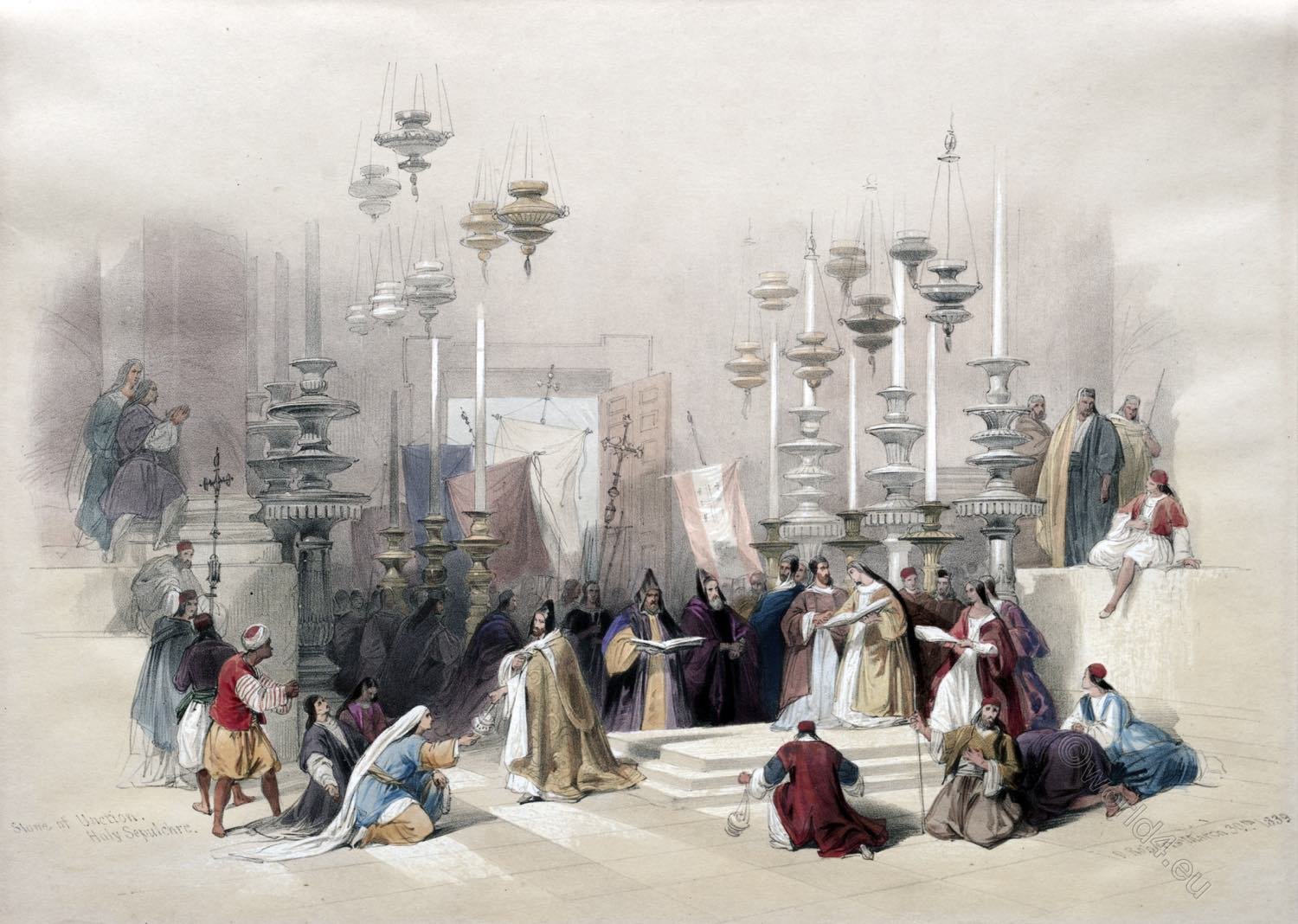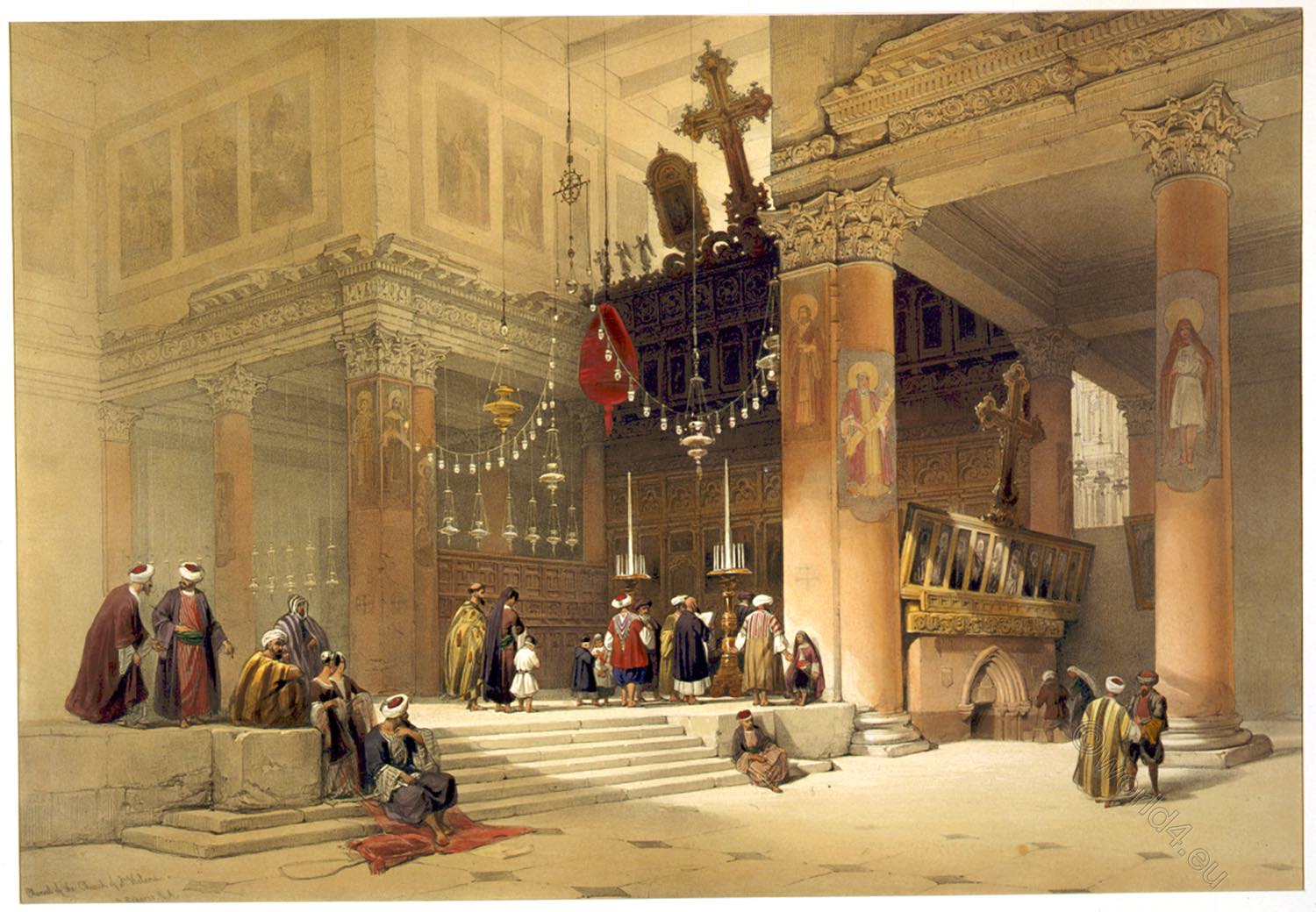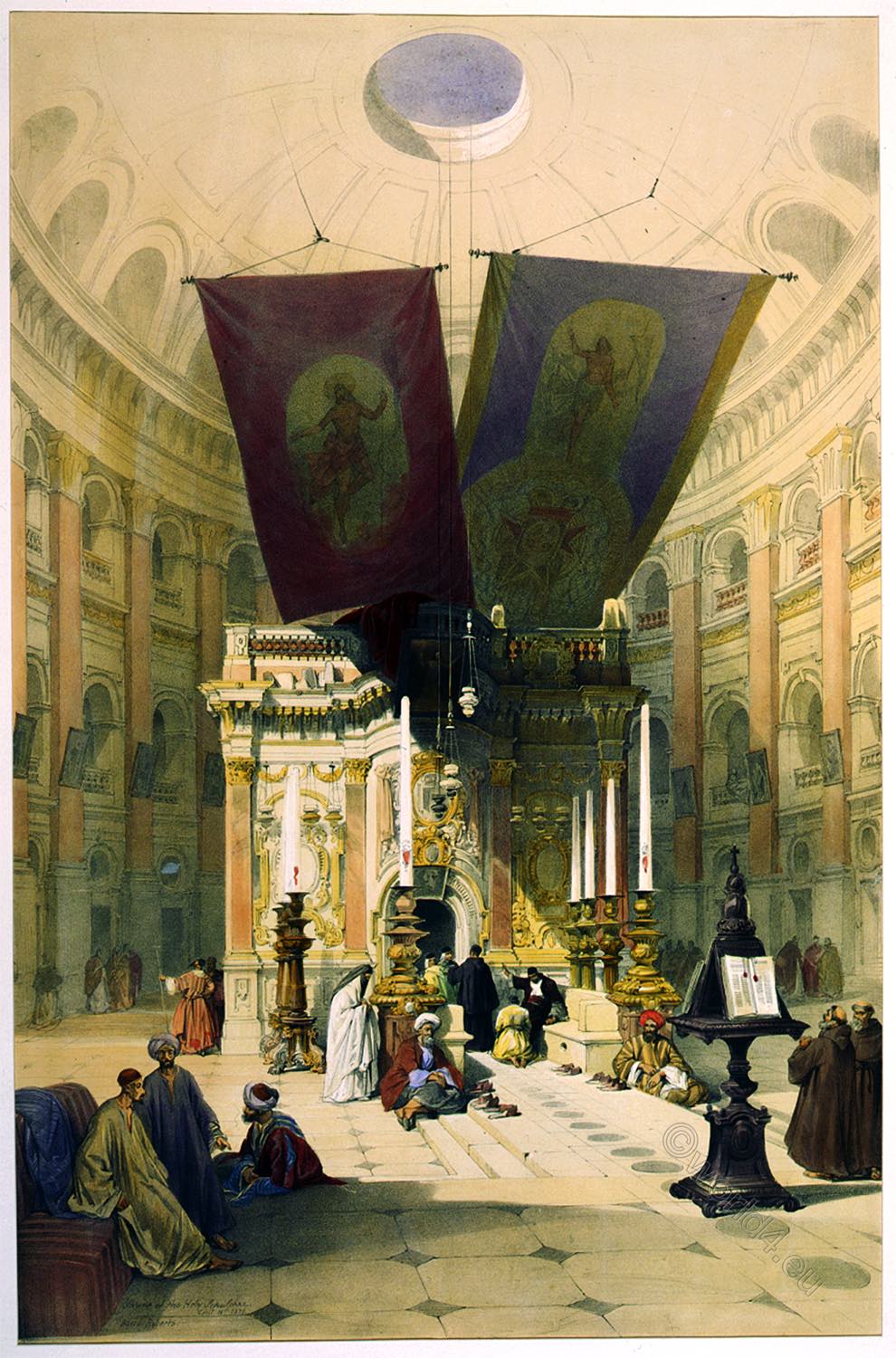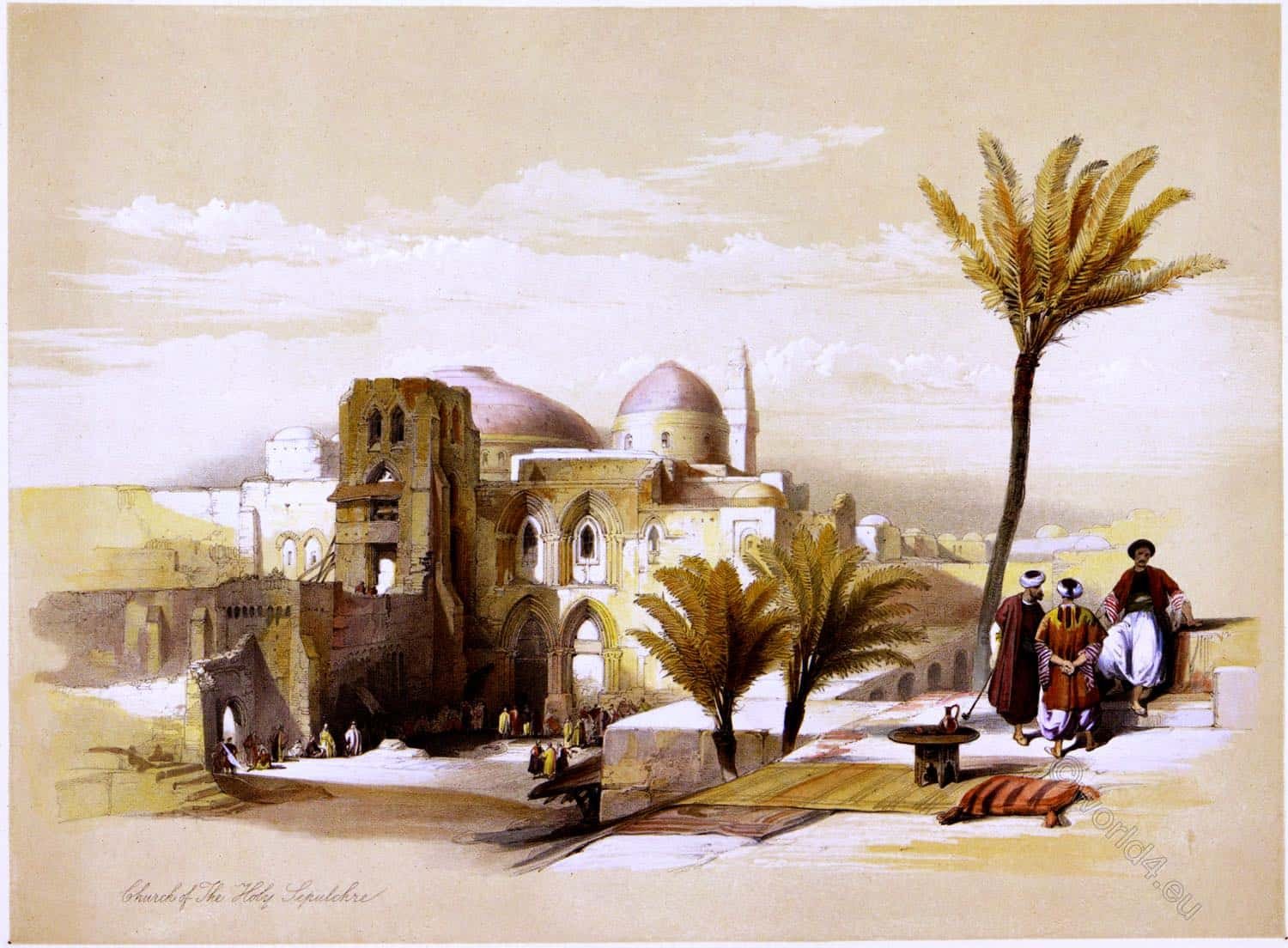
THE EXTERIOR OF THE HOLY SEPULCHRE.
The first and most interesting object within the walls of the Holy City, the spot to which every pilgrim first directs his steps, is the Holy Sepulchre: but the traveller finds his expectation strangely disappointed when, approaching the hallowed tomb, he sees around him the tottering houses of a ruined city, and is conducted to the door of a gigantic church.
Though the handsome cupola is visible from most parts of the town, yet, there being no peristyle, the access to this, the principal monument of the piety of the Empress Helena, is difficult, being nearly surrounded by buildings which at various periods have been allowed to be run up against it. It can be entered only from the south.
With the exception of the façade (represented in the vignette title-page), there is nothing remarkable in the external architecture or decoration of this mass of buildings, which is necessarily irregular from an attempt to bring under one roof the events of the Gospel history—the Golgotha and the Tomb, now shown in the Church of the Holy Sepulchre.
The ruined tower to the left was anciently the belfry.
Source: The Holy Land, Syria, Idumea, Arabia, Egypt, & Nubia, by David Roberts, George Croly, William Brockedon. London: Lithographed, printed and published by Day & Son, lithographers to the Queen. Cate Street, Lincoln’s Inn Fields, 1855.
Continuing
Discover more from World4 Costume Culture History
Subscribe to get the latest posts sent to your email.


